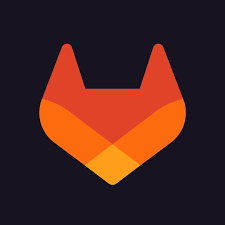Leading Ongoing, Continuous Results
As a designer and researcher with Raft I am able to work with a Department of Defense (DoD) organization, helping serve military members with software solutions. I am involved with many facets of product and software development while leading user efforts and creating solid outcomes for my contract company.
Role
UX / UI Designer and Researcher
Contribution Overview
Design
Research
Documentation
Design systems
Accessibility
Company Needs
The Contract Company (CC) needed a dedicated UX/UI designer and researcher to drive iterative design for internal, developer centered software.
It was clear that CC would also benefit from a greater breadth of input to fill existing gaps and establish efficient processes around design and research as well.
A New Challenge
As I began to look through the product I would be supporting, it was clear that I needed to learn more about development practices as well as the product itself. My selected product for CC supported all other products within the company. Developers utilized it to manage release and deployment processes for all software being delivered for military users.
Thus, my users were developers using a dedicated dashboard on desktop machines! A new challenge to conquer.
First Steps
As with any project or company, I began working through all of the “who, what, where, when, why” questions to find gaps and opportunities while tackling new requirements and features.
Below are system improvements initiated and led by me to increase usability of the CC dashboard within the first 6 months. None of this was possible without a great team of developers though!
Design System Reconciliation
The system had been through multiple past designers and a robust and cohesive design system was missing.
90% of product design system gaps filled or planned for future iterations
+ Aligned the application with CC existing design system
+ Created missing proprietary components within Figma and delivered to devs for coding and implementation
+ Identified additional gaps in design and functionality across the entire application
Accessibility Improvements
Being DoD, CC has limited access to accessibility means, so I used Lighthouse to get a baseline.
Increased accessibility to 92 (+8)
Increased best practices to 78 (+14)
+ Educated Developers about descriptive texts tags on images, links, buttons, etc.
+ Identified and planned improvements from highest level to granular changes
+ Resolved tabbing order of elements that were jumbled within navigation and page levels
Design Processes for the Win
Developers had little direction on working with designers to ensure correct implementation. Through research, trials, and feedback, we established efficient review cycles.
Created process documentation, delivered to 14 devs to implement
+ Educated Developers on Figma features, prototypes, and deliverables
+ Established scaled review process based on design, accessibility, feature, or flow needed
+ Updated GitLab ticket flows for ease in review
Build for All Preferences
Historically, design and experience work lacked responsive integration. The CC application’s light mode dashboard was also sorely neglected.
Identified and planned responsive updates on 100% of components and application UI
Prioritized light mode in deliverables and updates
+ Quantified and educated on need for responsive pages
+ Ensured light mode is never neglected again
Current Outcomes
-
60% increase in user engagement
Historically, engagement hovered around 5%. Using application metrics, key users were identified. These targeted users value the dashboard and use it the most, increasing engagement dramatically and offering real-time, actionable feedback.
-
100% adherence to design system needs
A consistent, cohesive application offers users intuitive design and interfaces. This decreases friction and allows for smooth interactions. Dev education and build planning yields reusable component design and an organized code repository.
-
Full documentation and user support
Ownership of the application documentation, as well as adding cyclical data audits, has given users robust technical data to complete their goals. Ongoing relationships with the content team ensures company-wide guidance is followed.
-
50% reduction in time to production
Based on initiated design changes, turn time for user and company feature requests has gone down dramatically. Efficient code and design systems, new processes, and communication across design and dev have cut time to release in half.
Future Outlook
I continue to learn about my users, both developers who use my application, and those that build it. Learning more about React and Python languages have increased my communication and requirement documentation
We continue to grow the application as CC needs scale in security, processes, and DoD led decisions.










